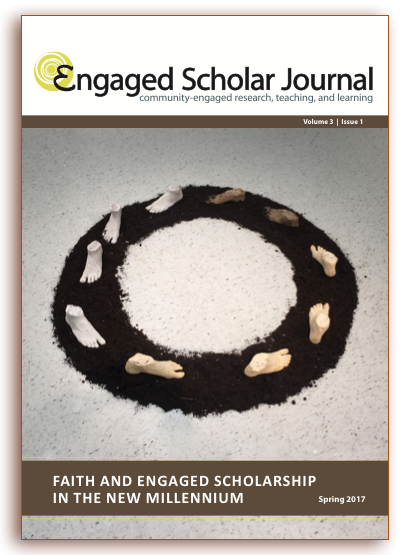Institutionalizing Community-Based Research in Indonesian Islamic Higher Education: Two Cases from the Sunan Ampel State Islamic University Surabaya and Alauddin State Islamic University Makassar
DOI:
https://doi.org/10.15402/esj.v3i1.242Keywords:
community-based research, institutionalization, Islamic higher education, Islamic values, social transformation.Abstract
The article presents a reflective experience on the institutionalization of community-based research in Indonesian Islamic Higher Education. It comprises two case studies from two different universities, the Sunan Ampel State Islamic University Surabaya and the Alauddin State Islamic University Makassar. Both are the two selected partners within the Supporting Islamic Leadership in Indonesia (SILE)/Local Leadership Development (LLD) Project in partnership between Indonesian Ministry of Religious Affairs and Canadian International Development Agency. The project introduces community-based research as an approach to engage community through Tridharma (Three mandates) of Higher Education. The institutionalization covers various activities from raising awareness, building capacity, to developing institutional policy at a national level. The cases show that the different socio-historical context and political dynamic of each campuses influence the process, challenge and response to the institutionalization. However, both campuses share similar reasons for adopting community-based research from the Islamic perspective, namely that using research as a means of promoting social change is consistent with the Qur’anic principles and the Prophetic tradition.
Downloads
Published
How to Cite
Issue
Section
License
Authors who publish with this journal agree to the following terms:
- Authors retain copyright and grant the journal right of first publication with the work simultaneously licensed under a Creative Commons Attribution License CC BY 4.0 that allows others to share the work with an acknowledgement of the work's authorship and initial publication in this journal.
- Authors are able to enter separate, additional contractual agreements for the non-exclusive distribution of the journal's published version of the work (e.g., post it to an institutional repository or publish it in a book), with an acknowledgement of its initial publication in this journal.
- Authors are permitted to post their work online (e.g., in an institutional repository or on their website) after the publication of their work in the Engaged Scholar Journal.
- Please note that while every opportunity will be taken to ensure author participation in the editing process, due to time constraints final copyediting changes may be made before publication to ensure APA adherence throughout all submissions.




